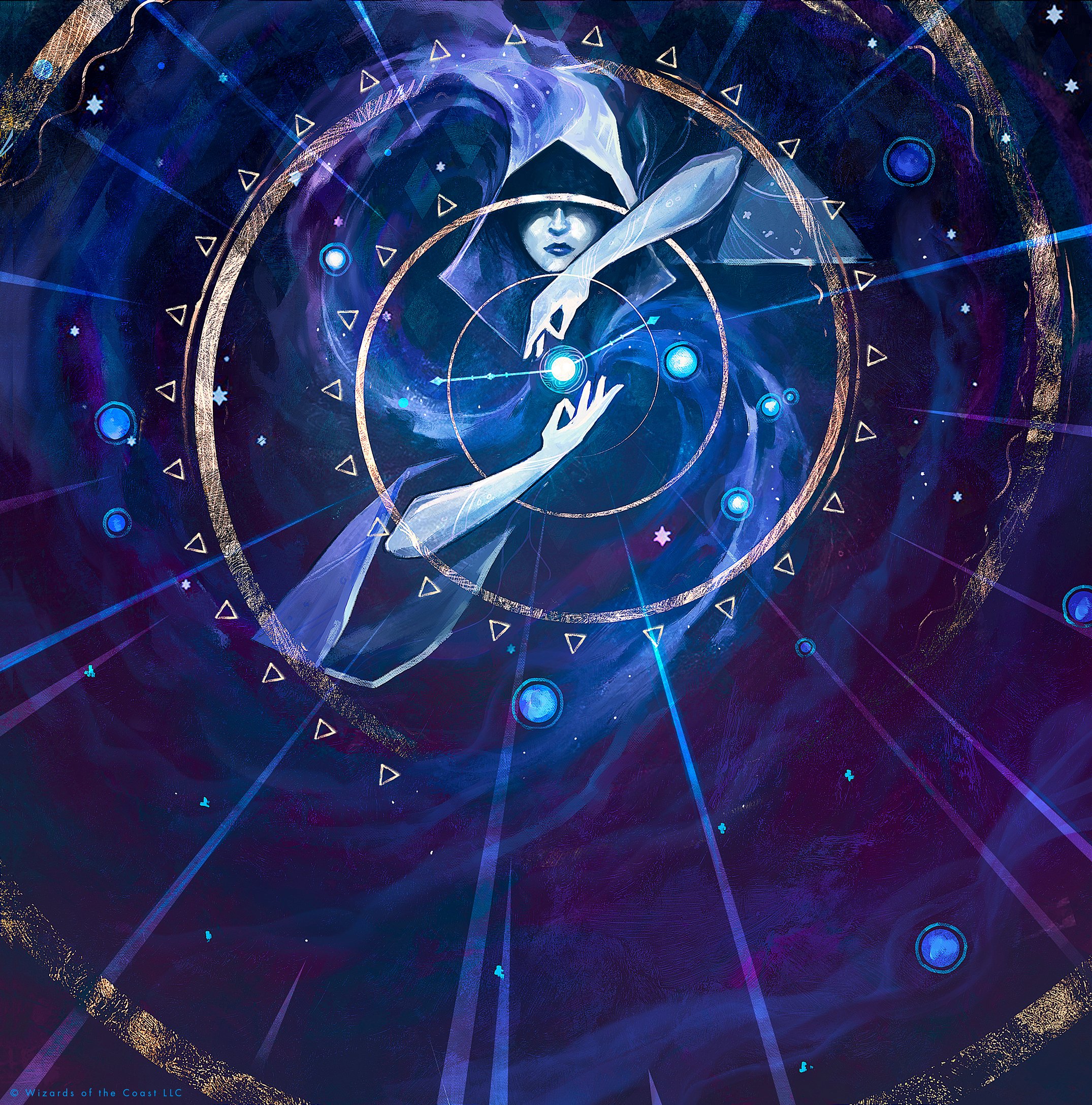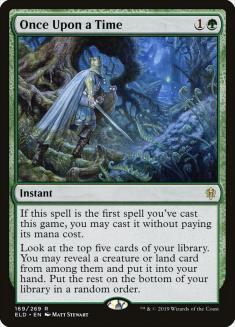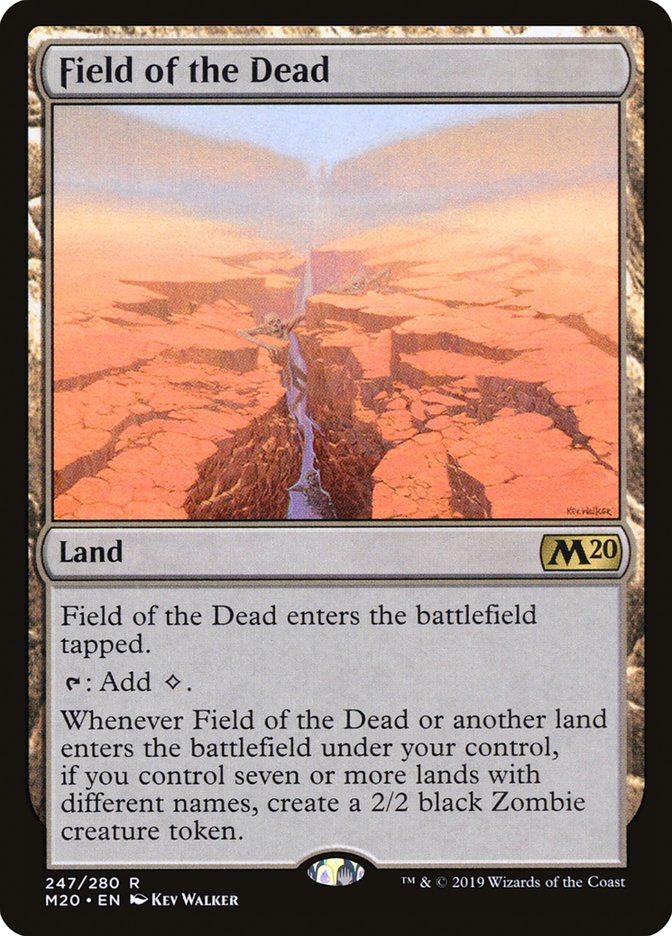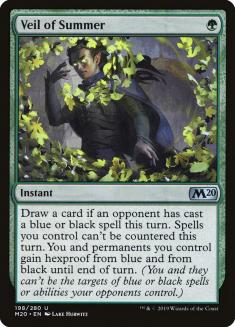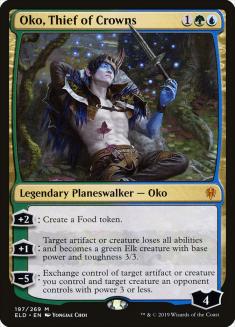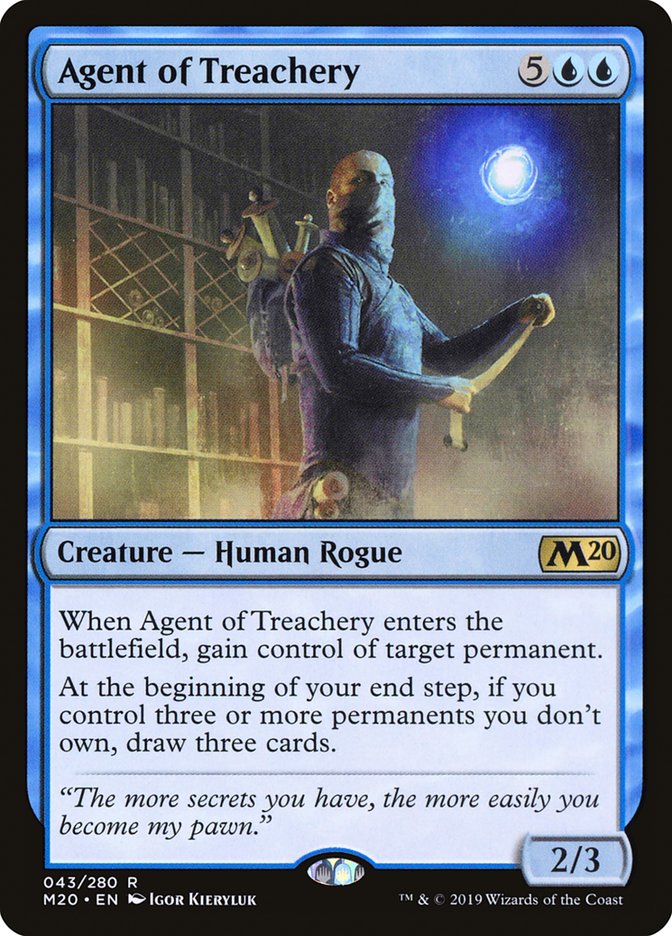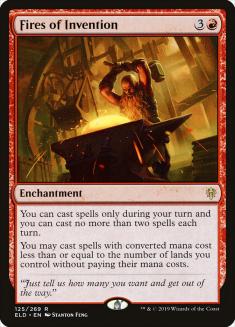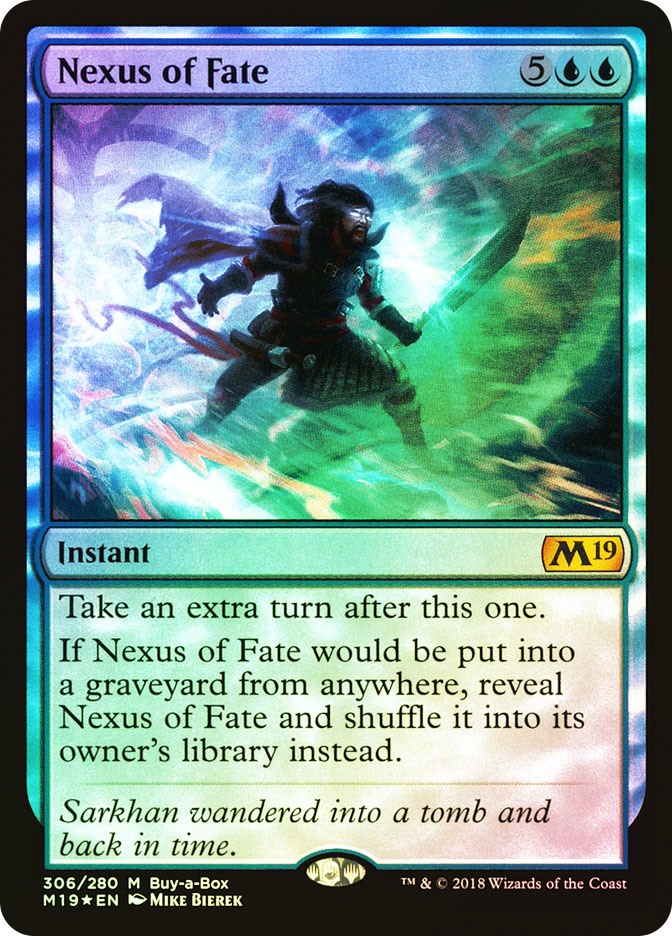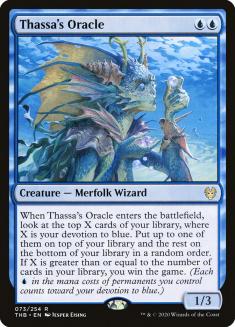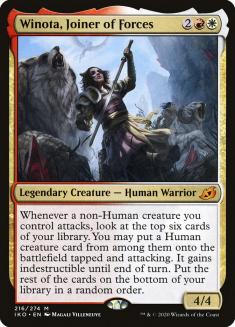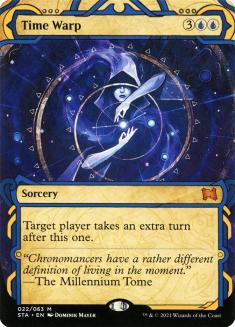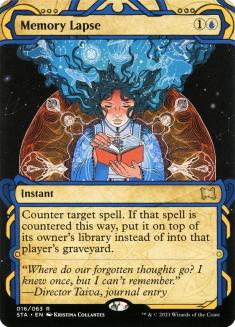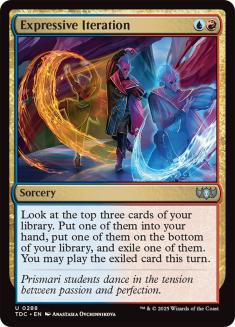“Much like my house a week before my second cross-country move in that many years, Historic is a complete mess. One could blame the release of Strixhaven’s Mystical Archives on Historic’s newfound imbalance, but I’m under the impression the format’s been cursed from day one. Today we’re going to take a look at Historic’s past, present, and potential future to figure out exactly why that is.” – Brad Nelson, June 8th, 2021
I was just putting the finishing edits on my article before sending it off to my CEDitor, and lo and behold yet another tone-deaf emergency Banned and Restricted Announcement came out for the Historic format. I’m honestly not surprised, as this has been happening since the format’s inception, but what is taking me aback is just how little I actually have to change in the rest of the article. Honestly, it’s not a lot and that’s pretty depressing.
Anyway, like I said in my introduction to my introduction, today’s topic is Historic, a format with a history riddled with complications, bans, and missed marks. Maybe things can take a turn for the better, and I was rather optimistic when I started my research on this topic, but as you’ll quickly see there just might not be any hope for the format. At least not in its current state of trying to check as many boxes as it possibly can.
Let’s start at the beginning.
A Brief History of Historic
In December of 2018, around the initial Magic Esports announcements, came another about MTG Arena and its lack of formats. Elaine Chase let the world know that a “Standard Plus” format was on its way to assure new Arena users that the digital cards they were collecting would continue to be usable after they rotated out of Standard. This core idea wasn’t completely hashed out until June of 2019 when the Historic format was finally announced a few months before the first Standard rotation on Arena.
The harsh reality was that Historic was simply just a means to an end from the very start. MTG Arena does not have a robust economy that includes trading, dusting, or anything else that would allow users to recoup lost value on cards rotating out of Standard. Historic was created and packaged as a way for users to not lose the complete value on their digital cards after they rotated out of Standard.
On August 29th, 2019 another announcement came out pertaining to a change in how the Arena economy will interact with Historic cards. Simply put, crafting cards that were no longer in Standard would cost two Wildcards to craft. This blatant attempt at a cash grab led to a lot of hostility from the community, and some embarrassingly hilarious-looking tweets to boot.
Two weeks later, Wizards of the Coast (WotC) walked back this decision and kept Wildcard crafting the same for Standard and Historic at a 1:1 ratio. This announcement also came with the caveat that, “MTG Arena will always focus on Standard gameplay” with “Historic as a complimentary experience, much like…Singleton and Pauper”. Historic released later that year, as did the first Historic Anthology, introducing twenty unique cards to the format.
On December 10th, 2019, WotC had another announcement introducing Historic suspensions. Similarly to how cards get banned in other formats, a second option opened up exclusively to the Historic format where cards could either be put on a banned or suspended list. Suspensions would act as a pseudo-limbo as cards would be removed from play, but not technically banned from the format. This announcement felt packaged in a way that left users unable to play with cards, but also not receive Wildcard redemptions like they would have with normally banned cards. Again, the community showed displeasure with this decision.
Casual to Competitive
While WotC most likely never intended for Historic to be a competitive format, it clearly became one once the pandemic hit. No longer could tournaments be played in person, leaving formats like Pioneer and Modern out of the equation as WotC wanted to broadcast their premier events through their flashier digital client. This left them either using Standard for every tournament in the 2020-2021 season or introducing Historic to the mix.
Historic became a competitive staple, used in the 2020 Mythic Invitational and multiple MPL / Rivals League Weekends, and sharing the spotlight with Standard in the 2020 Season Grand Finals and the Zendikar, Kaldheim, and Strixhaven Championships. It was also the format of choice in many monthly Championship Qualifier weekends. Through all of this, many new cards entered the format thanks to Jumpstart, Historic Anthology, and Remastered sets. The 2020 Mythic Invitational was even pushed back by two weeks to allow competitors more time to prepare for the introduction of Amonkhet Remastered.
Now don’t get me wrong, utilizing Historic during the pandemic was a very smart move. Relying solely on Standard for the past sixteen months would have been a much worse reality. It’s just that playing so much Historic at the professional level really highlighted some of the format’s most glaring holes.
Those are all the cards banned in Historic, omitting the seven Mystical Archive cards that were preemptively banned before their release. That’s a lot of cards for a format that’s only eighteen months old! In fact, Historic has averaged one ban per product release. That’s totally insane!
Even now in the wake of the Strixhaven Championship, we’re back to talking about bans after three Steam Vents-based archetypes combined to take up over 60% of the metagame and 60% of the wins. This just so happened to take place weeks after Thassa’s Oracle got banned when Dimir Tainted Pact (Lurrus) decks did the very same thing.
The conversation about Historic can just be about whether banning Time Walk was correct. But this isn’t about just one isolated card or deck. It’s a systemic issue; there clearly is not enough thought put into what should and shouldn’t get added to the Historic format.
The Customer Is Always Right
This is the part of the discussion where I need to define two camps: one where people care about competitive stability and one where they don’t. I’m under the impression that I and like-minded individuals like you who would read my content deeply care about competitive stability. That’s because we’re the Magic players who will play the highest amounts of games between new set releases. Magic generally is a very deep game, but even it has limitations with replayability (especially when we’re playing the format under competitive conditions for extended periods of time).
We want stable formats because they give us the most time to explore counters to popular strategies. If the cards are imbalanced, we really don’t have that much runway to do this. Take Historic now for example; I no longer have any interest in playing it because Jeskai Indomitable Creativity (CEDitor’s Note: FKA Jeskai Turns) feels like the end of the road. Maybe something can beat it, but odds are, even if I find that thing, they’ll be able to adapt in a fraction of the time it took me to discover it. That’s not fun!
The question I keep asking myself though is if WotC even cares about maximizing replayability. But, more importantly, should they? I mean, we already know they no longer see the value in Professional Magic so it’s not that big of a stretch to think they no longer value maximizing replayability either. Why would they when competitive play is such a small fraction of their marketspace and the group most affected by replayability constraints?
We’re seeing it more and more with each set release. Flashy, high-impact cards keep getting printed and continue to take over all existing formats. This is most likely because competitive players are such a small piece of the pie. It just seems like a much better business model to print cards that will sell, and then fix competitive formats when issues eventually pop up.
Silver Linings
Now I don’t know if my opinions here hold water or if they’re just the delusional ramblings of a lost man trying to make sense of the world. All I know is that in the past two years, we’ve seen an increase in set releases with a higher density of powerful cards and format instability.
Luckily, there’s still light at the end of this tunnel.
When WotC “fired me”, they used the phrase “Back to the Gathering”. I’m pretty sure you, WotC, and I are excited to get back to playing in-person events. With that will come more Modern tournaments, and less Standard and Historic on Arena. Sure the digital space will still exist in some capacity, but there’s just no world where WotC leans on Arena-based formats like they have been for the past two years.
Now this doesn’t excuse them for how shitty the Historic format has been for most of its existence, but like I alluded to previously, that might be by design. Whether that’s true or not, I still don’t feel like I have any agency so I’m not really going to worry about it. I’ll just continue to assume the Historic format will be multiple bans away from being healthy with new cards around the corner ready to blow it up again, and again, and again.
Current Historic Complications
So that finally gets us to the hot topic from yesterday’s announcement…
Was Time Warp the correct ban?
Well of course it’s obviously not, which is why we’re all talking about it. What’s more interesting is to talk about what could have been the correct decision, and while I hate to admit this in most cases, I’m with Matt Sperling on this one.
The Mystical Archive cards are simply too powerful for what’s currently in Historic. Maybe after a few more Remastered sets they’d match the current power level of the format, but in its current state they’re just patently absurd. Let’s break it down a bit further.
There’s a pretty basic formula I try to follow when playing Magic competitively. Effectively it’s valuing these three things above all else:
- Gaining card advantage
- Maximizing the effectiveness of your interaction against your opponent
- Minimizing the effectiveness of your opponent’s interaction against you
We call this “metagaming”, but this is what we’re all actually doing whether we know it or not. Sometimes we get it right, sometimes we don’t. But the power level of Magic has been increasing so much that interaction points have become more difficult to set up, which has shifted the way decks are built. Nowadays many of them are designed to create a palpable level of velocity while finding good interaction points as opposed to interactive gameplans.
Nissa, Who Shakes the World is the perfect example of how “new Magic” is played, as it does exactly what’s needed in this day and age. Put something on the battlefield that can generate card advantage, velocity, and an interaction point. Clean living if you ask me.
Creatures (3)
Lands (25)
- 1 Swamp
- 1 Island
- 1 Snow-Covered Island
- 1 Snow-Covered Swamp
- 1 Watery Grave
- 1 Godless Shrine
- 1 Steam Vents
- 1 Blood Crypt
- 1 Hallowed Fountain
- 1 Drowned Catacomb
- 1 Temple of Deceit
- 1 Fetid Pools
- 1 Field of Ruin
- 1 Castle Vantress
- 1 Castle Locthwain
- 1 Fabled Passage
- 1 Zagoth Triome
- 1 Clearwater Pathway
- 1 Brightclimb Pathway
- 1 Riverglide Pathway
- 1 Barkchannel Pathway
- 1 Blightstep Pathway
- 1 Darkbore Pathway
- 1 Hengegate Pathway
- 1 Ice Tunnel
Spells (32)
- 1 Brainstorm
- 1 Grim Tutor
- 1 Memory Lapse
- 1 Aether Spellbomb
- 1 Mind Stone
- 1 Opt
- 2 Tainted Pact
- 1 Coldsteel Heart
- 1 Thoughtseize
- 1 Sign in Blood
- 1 Inquisition of Kozilek
- 1 Languish
- 1 Yahenni's Expertise
- 1 Fatal Push
- 1 Censor
- 1 Supreme Will
- 1 Mastermind's Acquisition
- 1 Thought Erasure
- 1 Ritual of Soot
- 1 Shimmer of Possibility
- 1 Tyrant's Scorn
- 1 Witching Well
- 1 Wishclaw Talisman
- 1 Cling to Dust
- 1 Soul-Guide Lantern
- 1 Heartless Act
- 1 Eliminate
- 1 Mazemind Tome
- 1 Bloodchief's Thirst
- 1 Silundi Vision
- 1 Solve the Equation

Sometimes a strategy utilizes these “rules” far too well, and Dimir Tainted Pact (Lurrus) is a perfect example as it’s utilizing Magic’s most powerful strategy: combo-control. These strategies are simply the best at gaining card advantage, interacting with their opponents, and leaving very little space for opponents to interact with them. Honestly, I’m pretty sure every good combo-control deck I’ve seen in my ten-plus years of competitive play has been banned due to just how absurd they are.
Now we can finally get the heart of why I think banning Time Warp over any of these cards was so silly. Time Warp is clearly a very powerful card, but it’s not like the Simic Turns decks were breaking things. The reason why Jeskai Turns is so much more powerful is because it was able to utilize a disproportionate level of interaction against its opponents while also generating an amazing amount of velocity thanks to cards like Brainstorm, Expressive Iteration, Mizzix’s Mastery, and Prismari Command.
Ignoring the other potential offenders, Memory Lapse is far too good for Historic. It’s a great interactive spell that also has a high chance of shutting down an opponent’s ability to generate any form of velocity. For example, if you’re playing Gruul Aggro and your third-turn Gruul Spellbreaker gets Memory Lapsed, there’s a strong chance you never get back into the game if you didn’t already have a fourth land. It just sets non-Brainstorm decks back too far to justify playing a nonblue deck. There’s a reason why Aether Gust was optional and still highly played.
On the flip side, Brainstorm and Expressive Iteration can create velocity at a rate yet to be seen in Historic. Pairing these with Memory Lapse and a couple of removal spells can push a pilot so far ahead that the only way an opponent can win is by deploying a Hail Mary bomb hoping it goes unanswered. We all know at this point that rarely happens thanks to how many cards these spells allow us to see.
Banning Time Warp is honestly an embarrassment as Jeskai Control and Izzet Phoenix will most likely continue to dominate the Historic format for these reasons. Maybe a different Brainstorm deck pops up, who knows, but nonblue decks just don’t have a shot. Maybe a deck pops up on any given week thanks to mismatched interaction, but the chance it sticks around is low.
Mirror, Mirror on the Wall…
Can we please get back to the gathering this fall?
As you can probably tell, I’m under the impression that Historic will never be able to be a good competitive format but that’s okay. Like Elaine said years ago, it never was intended to be one. Soon we’ll all get back to the gathering, and WotC will be trying out a promising twist on the format.
Mirror, Mirror is a new event coming to Arena next month where they will be tweaking the stats on previously banned cards in Historic. Oko, Thief of Crowns and Teferi, Time Raveler are the highlighted cards, but I believe they will be showcasing more cards than just those two. This announcement is super-exciting, as they may finally play around with the idea of doing errata on cards strictly in the Historic format, which is not something easily done with a physical trading card game.
My hopes for Historic are that they move away from it being a competitive format; successfully “Mirror, Mirror” the format’s mistakes; and let us casually enjoy playing with some busted stuff. Sure things might go sideways here and there, but the rate at which that happens will go down if the format isn’t constantly under a professional microscope. It also is easier to fix when they can simply change how cards function in efforts to balance decks rather than blowing them up.
My biggest fear? That WotC continues to make announcements like the one they had yesterday.

